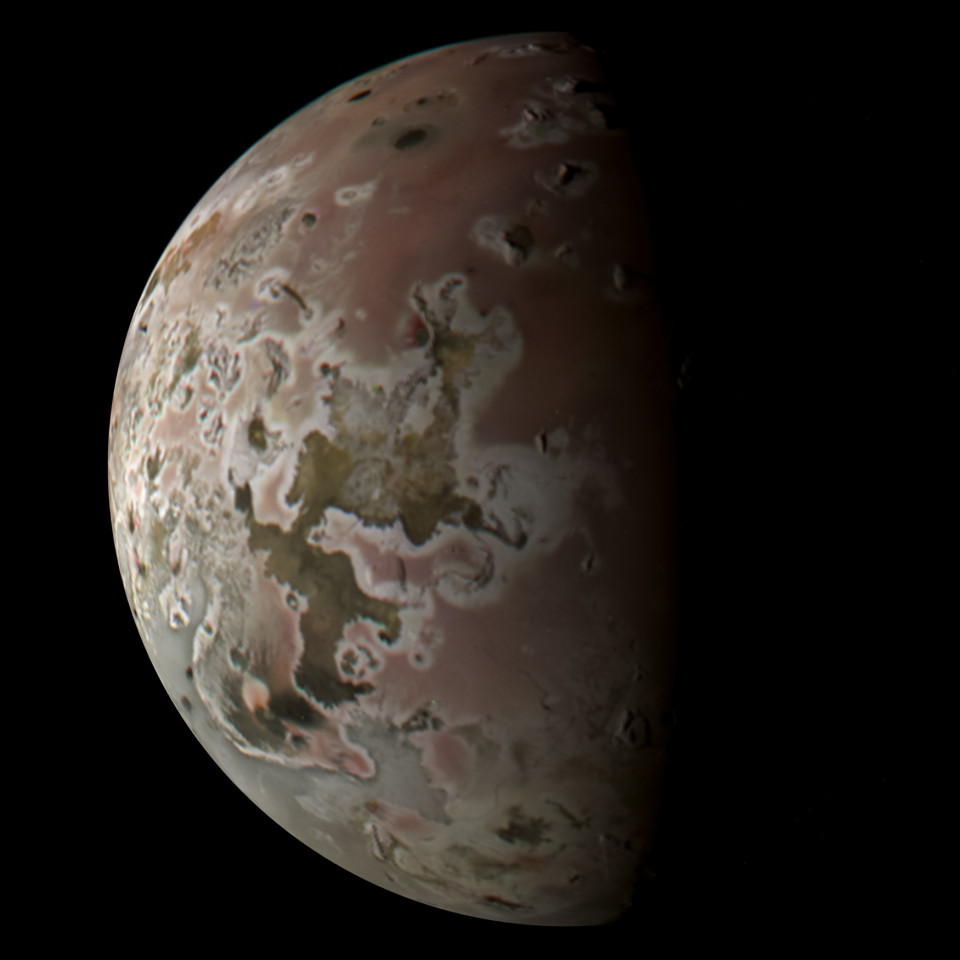The James Webb Space Telescope and Juno mission turned their eyes to Jupiter and its volcanic moon Io, revealing fine details.
Webb Images New Jet Stream on Jupiter

NASA / ESA / CSA / STScI / Ricardo Hueso (UPV), Imke de Pater (UC Berkeley), Thierry Fouchet (Observatory of Paris), Leigh Fletcher (University of Leicester), Michael H. Wong (UC Berkeley), Joseph DePasquale (STScI)
James Webb Space Telescope imagery has captured fine details in Jupiter's turbulent atmosphere, revealing a jet stream that travels at 515 kilometers per hour (320 miles per hour). The jet stream is a current in the highest layers of a planet's atmosphere; Earth's jet stream, for comparison, flows west to east, usually at speeds of 210 to 360 kph. (Gusts in Earth's jet stream rival Jupiter's, though, with a peak flow of 450 kph.)
In Jupiter's case, the jet stream travels high, some 40 kilometers (25 miles) above the cloud layers over the planet's equator. And it's huge, spanning some 4,800 km, equivalent to the width of China.
The wind is noteworthy because over the rest of Jupiter, winds die down with altitude above the cloudtops. The same is true at Saturn, but an equatorial jet stream there was previously known to break that rule, with wind speeds increasing even well above the clouds. Now, the atmosphere above Jupiter's equator proves to be similarly defiant. In fact, wind speeds increase even more with altitude over Jupiter's equator than over Saturn's.

NASA / ESA / CSA / STScI / Ricardo Hueso (UPV), Imke de Pater (UC Berkeley), Thierry Fouchet (Observatory of Paris), Leigh Fletcher (University of Leicester), Michael H. Wong (UC Berkeley); Illustration: Andi James (STScI)
Jupiter's jet stream is coming to light now because of JWST's near-infrared view, which reveals details in the fine hazes above the cloudtops. Two observations separated by 10 hours (Jupiter's rotation period) enabled researchers to track the movement of high-altitude features. Ricardo Hueso (University of the Basque Country, Spain) and colleagues report the findings in Nature Astronomy.
Juno Zooms in on Io

NASA / JPL-Caltech / SwRI / MSSS / Kevin M. Gill © CC BY 3.0
In the closest views since the Galileo mission flew by 20 years ago, NASA's Juno mission has captured Io anew in its most recent perijove pass. Jupiter's third-largest moon is the densest moon and most volcanically active body in the solar system.
While Juno's camera, JunoCam, was originally designed as a public-engagement instrument rather than a scientific one, amateur-processed JunoCam images are now showing this pockmarked moon in great detail from just 12,000 km (7,500 miles) away. The photographs show some of the moon's more than 400 volcanoes, visible as dark patches, as well as the dark-red plains of sulfurous lava. Io's surface has changed since the days of the Galileo mission, and these images — which will no doubt undergo further study — will help gauge the extent of those changes.
The true stunner, though, is still to come: Juno will pass ever closer to Io in two upcoming passes on December 3rd and February 24, 2024, and the latter pass will take the spacecraft within just 1,500 km of the moon.
 1
1








